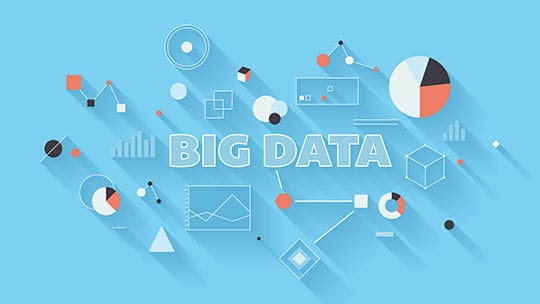Big data gained popularity due to its huge capacity to store, process and analyze the most complex data that helps the technology experts in interpretation, forecasting and implementing precautionary measures. Accurate statistical presentation of data simplifies the activities based on the data sets.
Every continent on this earth is a threat to many species and the endangered animal’s list keeps increasing.
- Africa has about 1,350 endangered species; the list includes the leopard, aye-aye, black rhino, and West Lowland gorilla.
- Antarctica’s records of over 80 endangered species few to name are the macaroni penguin, humpback whale, and the Southern Royal albatross.
- In America, there are nearly 2,600 endangered species, from North America are the American bison, brown bear, ocelot, and the red wolf, and from South America, the manatee, giant otter and little spotted cat are on verge of being extinct.
- Europe with 650 endangered species includes the Asiatic black bear, the sand cat, and the monk seal.
- Australia’s count of endangered species is over 700 to name few, the banded hare-wallaby, Bulmer’s fruit bat, and the hairy-nosed wombat.
- Asia has almost 2,100 endangered species of Asian Elephant, Tiger, Blue Whales, Giant Panda, Flemish Giant Rabbit, Sea Otter, Snow Leopard, Wolves, Whooping crane, Orangutan.
How Big Data Helps in Saving the Endangered Species?

Recommended for you: 10 Great Ways to Use Big Data for Small Businesses in 2019.
1. Alert
 General awareness in society, animal activists, wild animal recovery agencies, and government benefit with the appropriate data and precise actions do help in saving the endangered species.
General awareness in society, animal activists, wild animal recovery agencies, and government benefit with the appropriate data and precise actions do help in saving the endangered species.
2. Identification
 Identification of wild animals and their tagging, if they are very few remaining then how much time, do these species need to increase the number and the species can be saved. Trainable staff or volunteers required in order to save the wildlife and take due care of the endangered species.
Identification of wild animals and their tagging, if they are very few remaining then how much time, do these species need to increase the number and the species can be saved. Trainable staff or volunteers required in order to save the wildlife and take due care of the endangered species.
3. Effects on Endangered Species
 The Big Data can store, provide easy access, and interpret data of wild and aquatic animals based on the facts and figures, snapshots, and historical charts for scrutiny. The data helps the study of species at risk of extinction, the reason for extinction, corrective actions, possible recovery, and confirming what is beyond repair.
The Big Data can store, provide easy access, and interpret data of wild and aquatic animals based on the facts and figures, snapshots, and historical charts for scrutiny. The data helps the study of species at risk of extinction, the reason for extinction, corrective actions, possible recovery, and confirming what is beyond repair.
4. Objectives
 Big data gives enough information for us to define the purpose and link with the achievable objectives indefinite time such as we can actually save the environment and animals.
Big data gives enough information for us to define the purpose and link with the achievable objectives indefinite time such as we can actually save the environment and animals.
5. Government Rules
 Big Data can indicate the killing rate of threatened species like tigers, elephants, rhinos, wolf, bears, and mountain lions killed for economic benefit from animal skin, teeth, and even meat. If rules are broken, the immediate data match can support the actions taken against the poachers and manufacturers and sellers of such goods.
Big Data can indicate the killing rate of threatened species like tigers, elephants, rhinos, wolf, bears, and mountain lions killed for economic benefit from animal skin, teeth, and even meat. If rules are broken, the immediate data match can support the actions taken against the poachers and manufacturers and sellers of such goods.
6. Purchase
 Control over the purchase of products made out of skins of endangered species, the data of these sales correlated to the killings ultimately increasing animal safety measures for survival.
Control over the purchase of products made out of skins of endangered species, the data of these sales correlated to the killings ultimately increasing animal safety measures for survival.
7. Big Data in Research and Development
 Every study of endangered species requires historic data based on which the latest information if cross-checked helps to manage and make adequate changes resulting in unique solutions.
Every study of endangered species requires historic data based on which the latest information if cross-checked helps to manage and make adequate changes resulting in unique solutions.
8. Notification
 Change in health and behavior of animals and birds, infections, suddenly rising death rate, mismatch in the count, and such notifications are warnings to us indicating loss of endangered animals.
Change in health and behavior of animals and birds, infections, suddenly rising death rate, mismatch in the count, and such notifications are warnings to us indicating loss of endangered animals.
9. Natural Balance
 Analysis of species count inflating to an extent that it is threatening to another species or to humans or vice-a-versa can make these species extinct. The environment is the support system of all animals and human beings we should co-exist without interfering at damaging levels.
Analysis of species count inflating to an extent that it is threatening to another species or to humans or vice-a-versa can make these species extinct. The environment is the support system of all animals and human beings we should co-exist without interfering at damaging levels.
10. Information with Big Data
 It makes the support and saving wild animals interestingly faster and safer with the accurate data on each species food, health, behavior, needs, mating period, weather effects and any scientific link to the historical study. Current and past data with accurate details gives comparative factors necessary for further actions.
It makes the support and saving wild animals interestingly faster and safer with the accurate data on each species food, health, behavior, needs, mating period, weather effects and any scientific link to the historical study. Current and past data with accurate details gives comparative factors necessary for further actions.
11. Planning
 Big data tools empower the planning for the protection of wildlife. It gives scientists, organizations, and biologists correct prediction on a number of threatened species and the ones requires action on priority. Timely support and actions are the purposes of planning.
Big data tools empower the planning for the protection of wildlife. It gives scientists, organizations, and biologists correct prediction on a number of threatened species and the ones requires action on priority. Timely support and actions are the purposes of planning.
12. Hurdles
 The time, money, manpower, and efforts are part of the planning and this shapes the goals. Realistic work by environmentalists, scientists, animal lovers, volunteers can be efficient if the hurdles are known using big data analysis and solutions can be innovated using this information.
The time, money, manpower, and efforts are part of the planning and this shapes the goals. Realistic work by environmentalists, scientists, animal lovers, volunteers can be efficient if the hurdles are known using big data analysis and solutions can be innovated using this information.
13. Funding
 Animal protection and recovery involve money and not all funds are readily available, the government aids and other NGOs help in such activities. What big data does is it helps in assigning funds, proper utilization, approaching new parties for funds and grants, linking funds to various projects, keep control on expenses, setting priorities of the project.
Animal protection and recovery involve money and not all funds are readily available, the government aids and other NGOs help in such activities. What big data does is it helps in assigning funds, proper utilization, approaching new parties for funds and grants, linking funds to various projects, keep control on expenses, setting priorities of the project.
14. Favorable Decision
 The big data links the historic and new data making the decision making easy and favorable for the endangered species recovery program enabling faster actions based on these decisions.
The big data links the historic and new data making the decision making easy and favorable for the endangered species recovery program enabling faster actions based on these decisions.
15. Estimation
 Big data can provide an accurate estimation on a number of species are in need of recovery and can be literally recovered or protected in the predetermined period especially with the limited availability of funds.
Big data can provide an accurate estimation on a number of species are in need of recovery and can be literally recovered or protected in the predetermined period especially with the limited availability of funds.
16. Project Monitoring
 Every project involves numerous people who help at different levels the project managers can monitor the project of endangered species recovery and protection activities from the inputs received. Generating reports, sending feedbacks, and detailed study of data is what technology brings to the project.
Every project involves numerous people who help at different levels the project managers can monitor the project of endangered species recovery and protection activities from the inputs received. Generating reports, sending feedbacks, and detailed study of data is what technology brings to the project.
You may also like: Organizations Today May Consider Outsourcing their Big Data Preparation.
Final Words

Big Data Technology provides assistance in scanning the wild animals, strategizing basis with statistical data for recovery of animals about to extinction. In many ways, it can help in correcting the precautions, introducing new plans for saving endangered animals, in all manage the health of planet earth and making it a better place to live.
This article is written by Harsh Arora. He is a proud father of four rescued dogs and a leopard gecko. Besides being a full-time dog father, he is a freelance content writer/blogger and an educationist, with more than 6 years experience in the field of content writing.





